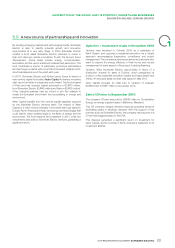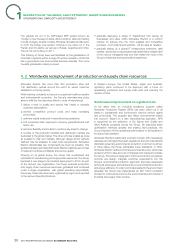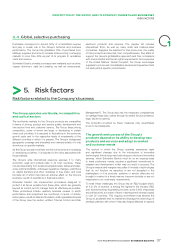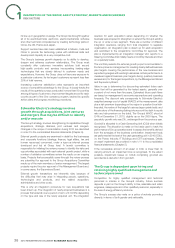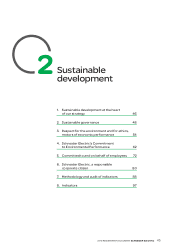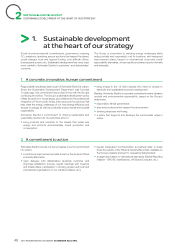APC 2010 Annual Report Download - page 39
Download and view the complete annual report
Please find page 39 of the 2010 APC annual report below. You can navigate through the pages in the report by either clicking on the pages listed below, or by using the keyword search tool below to find specific information within the annual report.
DESCRIPTION OFTHEGROUP, ANDITSSTRATEGY, MARKETS ANDBUSINESSES
1
RISK FACTORS
4. 4 Global, selective purchasing
Purchases correspond to around 50% of consolidated revenue
and play a crucial role in the Group’s technical and business
performance. The Group has globalised 70% of purchases from
strategic suppliers and aims to increase local sourcing in emerging
markets to more than 50% as part of its program to re-balance
costs and revenue.
Schneider Electric primarily purchases raw materials such as silver,
copper, aluminum, steel and plastics, as well as components,
electronic products and services. The supplier list includes
international fi rms, as well as many small and medium-sized
companies. Suppliers are selected for their know-how, the quality
of their products and services, their competitiveness, their ability to
support the Group’s globalisation approach and their compliance
with environmental and human rights requirements. As a supporter
of the United Nations’ Global Compact, the Group encourages
suppliers to join as well. A sustainable development agreement sets
out each party’s specifi c commitments.
>
5. Risk factors
Risk factors related to the Company’s business
The Group operates worldwide, in competitive
and cyclical sectors
The worldwide markets for the Group’s products are competitive
in terms of pricing, product and service quality, development and
introduction time and customer service. The Group faces strong
competitors, some of whom are larger or developing in certain
lower cost countries. It is exposed to fl uctuations in the economic
growth cycle and to the respective levels of investments of the
different countries in which it is present. The Group’s widespread
geographic coverage and diversifi ed end markets enable it to ride
downturns on specifi c markets.
As the Group records more than one-third of its revenue in emerging
or developing countries, it is exposed to the risks associated with
those markets.
The Group’s wide international presence exposes it to many
economic, legal and political risks in its host countries. These
include risks arising from social unrest (particularly, strikes and walk-
outs), political instability, unforeseen regulatory changes, restrictions
on capital transfers and other obstacles to free trade, and local
tax laws, all of which may have an adverse effect on the Group’s
business, results of operations or fi nancial position.
Schneider Electric has implemented procedures designed to
protect it as far as possible from these risks, which are generally
beyond its control, and to manage them as effectively as possible.
These procedures include quarterly business reviews in which
performance and projections are monitored, in terms of activity,
action plans, results to date and forecasts, at all organisational levels
of the Group (see the section entitled “Internal Control and Risk
Management”). The Group also has the necessary competencies
to manage these risks, mainly through its central functions (fi nance,
legal, tax and customs).
The protection provided by these measures may nevertheless
prove to be inadequate.
The growth and success of the Group’s
products depend on its ability to develop new
products and services and adapt to market
andcustomer needs
The sectors in which the Group operates experience rapid
and signifi cant changes due to the introduction of innovative
technologies. Introducing new technology products and innovative
services, which Schneider Electric must do on an ongoing basis
to meet customers’ needs, requires a signifi cant commitment to
research and development, which may not result in success. The
Group’s revenue and margins may suffer if it invests in technologies
that do not function as expected or are not accepted in the
marketplace or if its products, systems or service offers are not
brought to market in a timely manner, become obsolete or are not
responsive to our customers’ requirements.
To meet these challenges, the Group has an R&D budget which,
at 4 to 5% of revenue, is among the highest in the industry. R&D
and forward-looking engineering involves some 8,600employees
around the world, a number of them in development centres located
in over 25 countries. This ongoing commitment has allowed the
Group to accelerate time to market and leverage the technology of
strategic partners with whom it has also forged alliances to expand
2010 REGISTRATION DOCUMENT SCHNEIDER ELECTRIC 37








